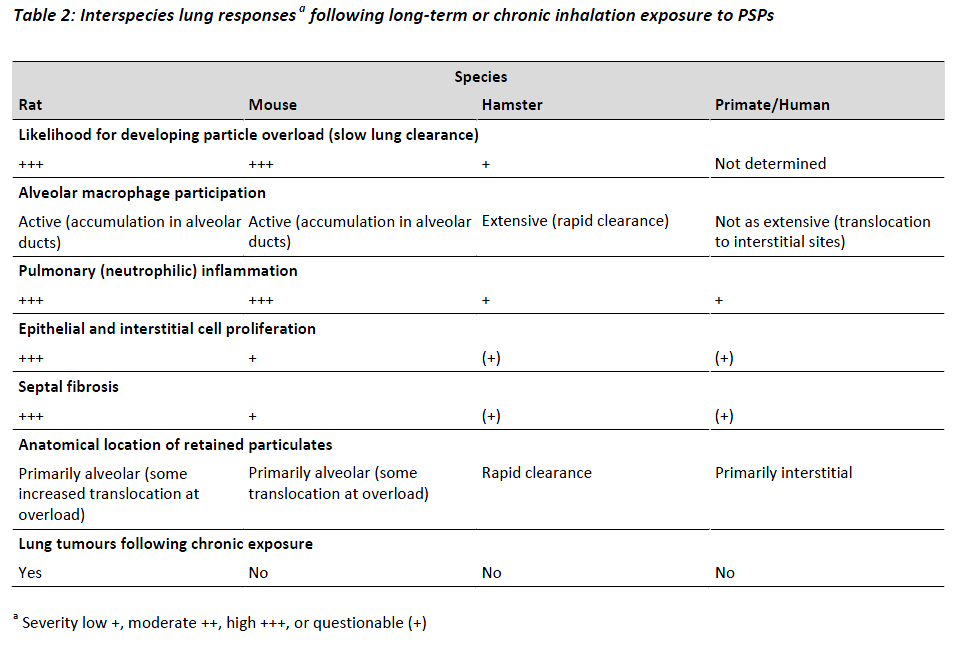Relevance of `Lung Overload` for humans
As noted in the ILSI Workshop Consensus Report in 2000, high-dose, long-term exposures to poorly soluble particulates (PSPs), which produce lung tumours in rats, do not induce neoplastic pulmonary effects in similarly exposed mice and hamsters. Moreover, the abundance of available clinical and epidemiological data in occupationally-exposed workers is consistently negative for lung cancer as well as non-neoplastic lung diseases. Levy (1995) concluded that the findings of rat-specific lung neoplastic responses to chronic PSP exposures are unique to that species. Therefore, it was noted that the findings in rats are not useful endpoints for human risk evaluations of poorly soluble particulate exposures. In contrast to the experience with rats, epidemiological findings in coal mine workers, a -well studied occupationally- exposed group of workers with routine "particle overload” in their lungs, clearly demonstrate a lack of lung cancer risk when correlated with exposures. In addition, results from several extensive human epidemiology studies in titanium dioxide or carbon black exposed workers clearly have demonstrated that long-term occupational exposures to these particle-types do not cause lung cancer or non-cancerous diseases of the respiratory tract.
In attempting to elucidate differential mechanisms between rats and humans when investigating pulmonary responses to high dust concentrations, the studies reported by Nikula et al, 1997 serve to be particularly instructive. By studying lung morphological and morphometric responses of rats and humans under similar exposure conditions, the researchers demonstrated fundamental differences between the two species when assessing particle retention patterns and lung tissue and cellular reactions following high dose dust exposures. Interpretation of the findings appears almost counterintuitive – that is, under a wide range of chronic exposure conditions, inhaled diesel soot is retained predominantly in the alveolar regions of rats. In contrast to the dosimetry in rats, long-term inhaled particulates are retained primarily in the interstitial compartments in humans. This finding implies a much greater rate of particle translocation from deposition sites through pulmonary epithelium. The measured differences of particle retention and distribution patterns in rats vs. humans, may account for the following findings: 1) longer particle clearance rates in humans vs. rats; 2) enhanced sensitivity in sustained rat lung inflammatory and cytotoxicity responses; and 3) sustained respiratory tract pathological tissue responses in rats corresponding to a unique pathological pattern commencing with inflammation, fibro proliferative disease, cell proliferation, genotoxicity and lung tumour development. In contrast, none of these parameters have been documented in PSP-exposed workers (Table 2).

